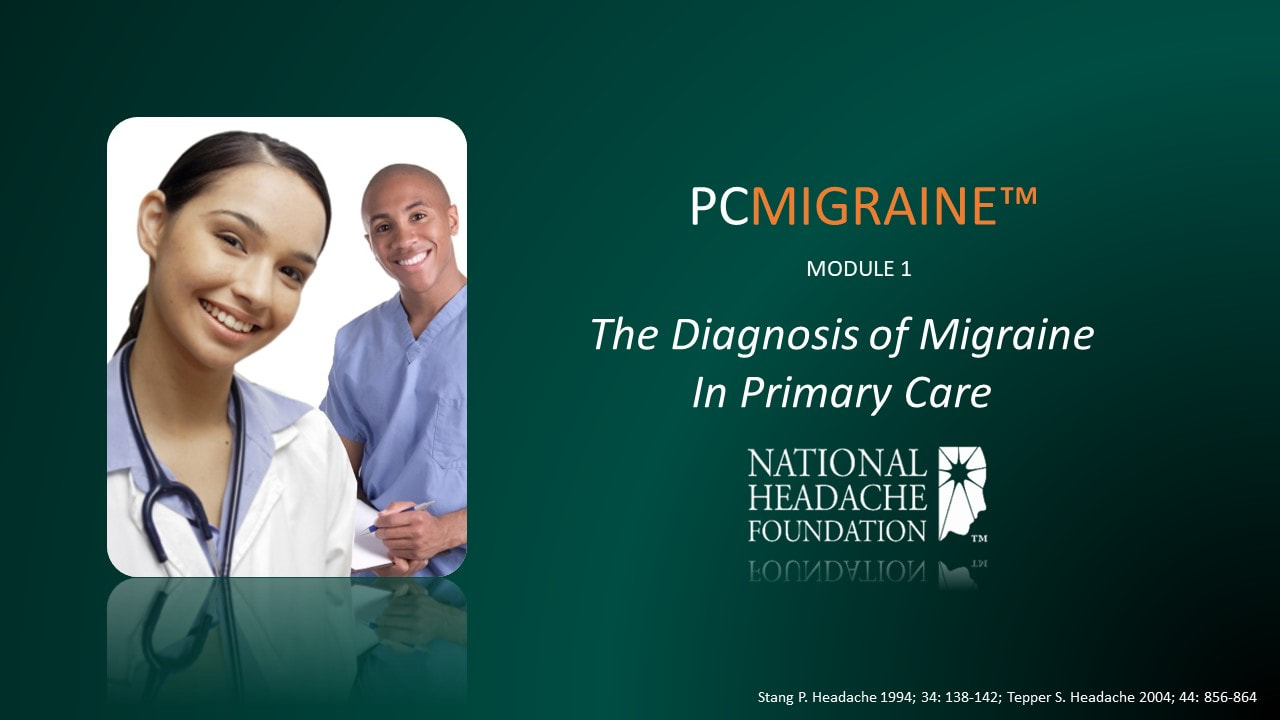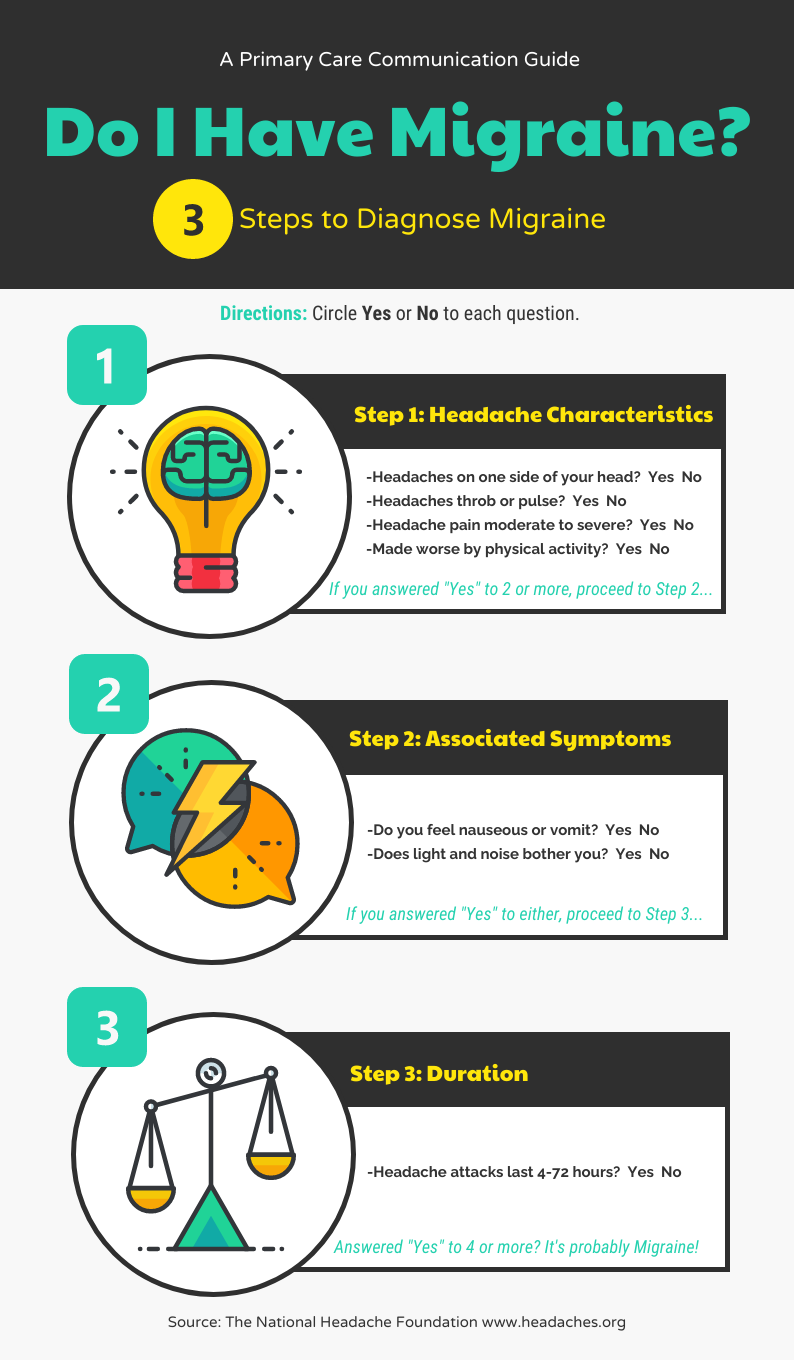Introduction
The National Headache Foundation is the premier advocacy organization for those with migraine... as well as providing educational programs for those who treat migraine. As one of the most comprehensive educational programs ever created, we would like to welcome you to PCMigraine™. PCMigraine™ can be found here or via mobile app by simply accessing the links or QR code below this video.
We are currently in the process of reaccreditation review, so the CME track is on hold at this time.
You are still able to access the same high quality content via the non-CME track.
Thank you in advance for your patience.
If you would like to be notified when the CME track is back online, or for any other questions, please contact Susan Stone at: [email protected].
We are currently in the process of reaccreditation review, so the CME track is on hold at this time.
You are still able to access the same high quality content via the non-CME track.
Thank you in advance for your patience.
If you would like to be notified when the CME track is back online, or for any other questions, please contact Susan Stone at: [email protected].
Instructions for Use
PRIMARY CARE MIGRAINE Modules
TARGET AUDIENCE
This activity is targeted to any clinician with interest in education on migraine, including primary care physicians, nurse practitioners, physician assistants, emergency room physicians, and pediatricians.
This activity is targeted to any clinician with interest in education on migraine, including primary care physicians, nurse practitioners, physician assistants, emergency room physicians, and pediatricians.
For more information, please contact Susan Stone at [email protected]
|
MODULE 1: The Diagnosis of Migraine in Primary Care (30 min)
Learning Objectives:
|
�
|
Module 2: Secondary Headache Disorders in Primary Care (30 min)
Learning Objectives:
|
|
Module 3: ABCs of Acute Therapy in Primary Care (30 min)
Learning Objectives:
|
|
Module 4: ABCs of Preventive Therapy in Primary Care (30 min)
Learning Objectives:
|
Diagnosis Tool
In three quick steps... the Diagnosis tool shows if the symptoms provided meet the headache characteristics and associated symptoms required for a diagnosis of migraine without aura or probable migraine. Use Now>>
Disclaimer:
The above tool does not establish a diagnosis of migraine, but only shows if the symptoms provided met the headache characteristics and associated symptoms required for a diagnosis of migraine without aura or probable migraine. A diagnosis of migraine without aura or probable migraine typically has a normal neurological & fundoscopic exam and no red flags for a secondary headache disorder. If red flags are present then an appropriate evaluation has been done to rule out secondary headache disorders. The diagnostic criteria also require 5 attacks during a person’s lifetime and that there is not some other headache disorder that better accounts for the headaches. This tool will not help identify those with aura.
The above tool does not establish a diagnosis of migraine, but only shows if the symptoms provided met the headache characteristics and associated symptoms required for a diagnosis of migraine without aura or probable migraine. A diagnosis of migraine without aura or probable migraine typically has a normal neurological & fundoscopic exam and no red flags for a secondary headache disorder. If red flags are present then an appropriate evaluation has been done to rule out secondary headache disorders. The diagnostic criteria also require 5 attacks during a person’s lifetime and that there is not some other headache disorder that better accounts for the headaches. This tool will not help identify those with aura.
Medication Guides
The medication guide covers acute and preventive options. You can access these guide below or on the top menu under "MED GUIDES". Click the medication of interest and you will have easy access to brands, dosages, schedules, side effects, headache specialist comments, contraindications, pregnancy and breast-feeding precautions, common drug interactions, and counseling tips for your practice.
Infographics
These Infographics are Communication guides to help explain the diagnosis and treatment of migraine with your patients during office visits. They can be printed and given to the patient or shown on a tablet to the patient during an office visit. They can also printed and placed on bulletin boards to your exam rooms to educate your patients with migraine. The four communication guides correspond with the CME modules and include a guide to discuss migraine diagnosis… a second to discuss migraine management, a third called the ABCs of Migraine Management and a fourth to explain preventive options. Let’s take a look at the diagnosis guide called “Is it Migraine?”
These Infographics are Communication guides to help explain the diagnosis and treatment of migraine with your patients during office visits. They can be printed and given to the patient or shown on a tablet to the patient during an office visit. They can also printed and placed on bulletin boards to your exam rooms to educate your patients with migraine. The four communication guides correspond with the CME modules and include a guide to discuss migraine diagnosis… a second to discuss migraine management, a third called the ABCs of Migraine Management and a fourth to explain preventive options. Let’s take a look at the diagnosis guide called “Is it Migraine?”












